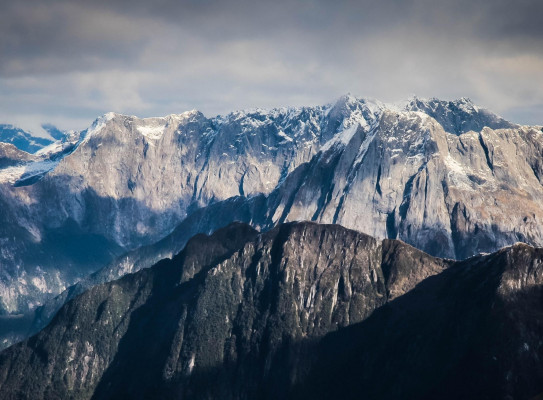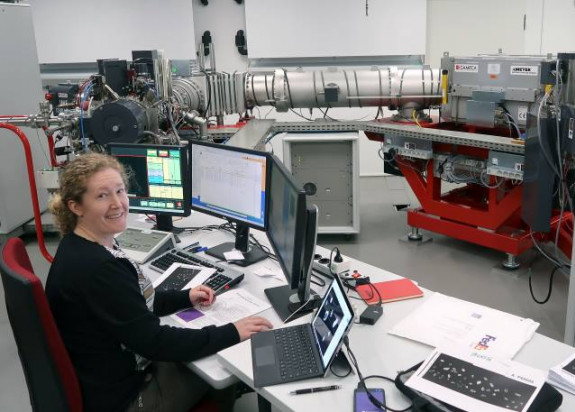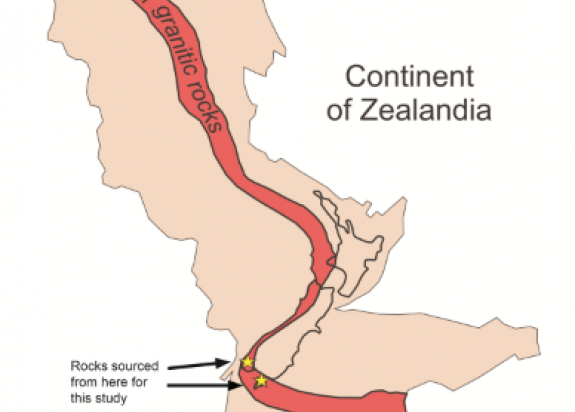Continent of Zealandia older than previously thought, study finds

Tiny mineral grains taken from granite rocks collected in Fiordland and Stewart Island have led to a potential breakthrough in ancient continental reconstructions.
The finding, published in Geology this week, reveals that the continent of Te Riu-a-Māui / Zealandia is older than previously thought and this has helped scientists trace its geological whakapapa back to ancient supercontinents that existed more than 1 billion years ago.
Lead author of the study, Rose Turnbull of GNS Science, notes that until now New Zealand’s oldest rocks – in the Tasman District – were dated at about 500 million years old and linked to the supercontinent Gondwana.
However, the new finding shows that some granite rocks in Fiordland and Rakiura/Stewart Island can trace their origins back much further in time and are likely linked to an earlier supercontinent called Rodinia that existed one billion years ago.
“This represents a major shift in thinking and it comes down to the [isotopic] analysis of tiny grains of the mineral zircon in specialist laboratories in Australia and Germany,” Dr Turnbull says.
A GNS Science-led study published in 2017 put the continent of Zealandia on the world map. It showed that Zealandia - like other continents - is large, relatively high, has thick crust, and contains rocks like granite and greywacke.
However, all the other continents have rocks that are 1 billion years old or older, a feature that appeared to be missing from Zealandia.
This new study ticks that final continental box. There is no longer any doubt that we live on top of a continent.

Granite rocks form by crystallising magmas that were made by melting deep parts of the Earth’s continental crust. The granites have been brought to the surface by uplift of the Zealandia continent in response to earthquake activity along our plate boundary over millions of years.
Dr Turnbull says that a key finding in this study was the unique isotopic signature measured in microscopic grains of zircon, a mineral that is found in all granites. The isotopic composition of zircon is used in geology to understand deep time and can be used to reveal what the Earth’s crust looked like both at and deep below the surface.
“The isotopic signature of zircon grains from Zealandia tell us that there are ancient 1-billion-year-old rocks still concealed deep in the crust beneath Fiordland and Rakiura/Stewart Island – rocks that were formed as part of the Rodinia supercontinent.
This work sheds new light on Zealandia’s ancient past – a geological past that has now been shown to be over 1 billion years old.
Dr Turnbull says the new study is an example of GNS Science’s ongoing exploration of the continent of Te Riu-a-Māui / Zealandia and shows that new discoveries are there to be made.
“To use a human analogy, all of today’s eight continents have older ancestors such as Gondwana, Laurasia, and Pangea.
“The new study has enabled scientists to place Zealandia in the ‘family tree’ of continents descended from Rodinia.”
With this new information, Zealandia may yet turn out to be a ‘missing link’ between South China, Australia, and North America – and this opens up the position of South China and Zealandia within Rodinia to new international scrutiny, Dr Turnbull says.
The research was funded through a Marsden Fund fast-start grant. Collaborating institutions included California State University, Northridge, The University of Western Australia, Curtin University, Heidelberg University, and The University of Vermont.
